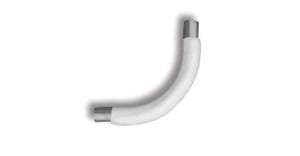May 29, 2019

Dynamic weighing is essential in many industrial processes that involve managing of a continuous variable weight. A typical example is weighing a product on a conveyor belt. At the point of weighment, the product could be on the weighed section of belt for only a few seconds.
This article describes two machines designed to weigh dry particulate ingredient as it is being fed into a process.
Method 1: Screw Feeder Using Loss-in-Weight Control
Diagram 1 shows a loss in weight screw feeder. The entire feeder with integral hopper is weighed. As the ingredient is fed into the process, the weight of ingredient in the feeder is continuously decreasing, hence the name loss-in-weight feeder.
In a continuous process such as feeding desiccant onto baby diapers for example, it is necessary to have the weight of desiccant on each diaper to be very close to the desired amount. If the line rate is 120 diapers per minute, the feeder and weight control must feed the desired weight on each diaper within 0.5 seconds.
To achieve this high accuracy the screw feeder must be capable of feeding at a uniform rate. Even though the ingredient is weighed, close tolerance weigh feeding requires precise consistency. The loss-in-weight control cannot be continuously changing the feeder output to achieve overall accuracy. If the feed rate is varying, the weight of desiccant on each diaper will also vary. One diaper with a little too much and the next diaper with too little. Feedback control uses past information (weight) to correct the future feed rate. Feeder manufacturers have special algorithms to reduce the cycling that could occur with feedback control.
Loss-in-Weight Batching Control
Loss in weight feeders can have an advantage over “add weigh” control in batching applications, when the batch size is small compared with the hopper weight of the hopper downstream. “Add weigh” control utilizes a weighed hopper downstream of the feeder outlet. The batch is weighed in the separate hopper. The weight controller stops the feeder when the batch weight is achieved. Then the weigh hopper is emptied into a transfer bucket or directly into the process (a mixer for example). The loss-in-weight feeder can feed directly into the mixer or other processing device. Best accuracy is achieved when batch make up time is longer than 20 to 30 seconds
Batch weighing differs from continuous feed rate weighing because most weighments are taken when the mass to be weighed is static. The sequence of static weighing is as follows:
- weigh the feeder just prior to starting the batch
- check weight of ingredient fed after batch is completely fed
Two weight readings are taken during feeding and utilize dynamic weighing.
- change the feed rate from fast feed to slow feed or dribble feed (this is not a critical weighment)
- stop the feeder close to the end of the batch (“close to” time considers that the ingredient may still be falling from the feed screw after the screw is stopped (ingredient momentum). In flight compensation for loss- in-weight feeding is not necessary since the in-flight particles are already weighed. This is a comparison to add weigh batching where in in flight particles must be approximated.
Loss in weight feeding--both continuous and batching--requires considerations to ensure weighing is reliable.
- refilling the feeder: Feeder hoppers are sized to ensure the scale capacity is as small as possible and the screw feeder can function optimally. As a rule of thumb, hoppers are sized to contain four minutes of maximum feed rate for continuous feeding and one batch for batch feeding. For continuous feeding, the weighing control must be interrupted during refilling. Refilling rate is sized to refill the hopper in no longer than 15 seconds. This ensures a short interruption of weighing control and no interruption of feeding occurs. For batch feeding, a batch cannot be started until refilling of the hopper is complete.
- flexible connections: feeding powders and particulates require that the feeder is dust tight. The refill inlet and screw feed outlet require connections to the upstream and downstream connections. These connections must be dust tight and flexible to not interfere with weighing integrity.
- dust collection during hopper refill: during refill the air in the hopper is displaced and must be vented out of the hopper. It is optimal to install a small reverse pulse backwash filter to filter the vented air during the refill (15 seconds max for continuous feeding). The backwash pulse can occur after the refill is complete. This ensures that there is no wasting of the fed ingredient. If the ingredient is a non-dusty granule or pellet, a static filter bag without pulsing will suffice.
- electrical wiring to the motor must be flexible and placed horizontally.
Method 2: Weigh Belt Feeding
Diagram 2 shows a weigh belt feeder. Dry ingredient is stored in a hopper at the inlet. It falls onto a travelling belt. The cross-sectional shape of ingredient on the belt is created by a manually adjustable shear gate placed over the belt downstream of the inlet. The ingredient on the belt passes over a weigh bridge and into the outlet section.
A fixed portion of the frame supporting the belt is open. In the center of the opening is a thin, circular metal bar, lying across the bottom of the belt and supported by a load cell. This section is called the weigh bridge.
The load cell weighs the ingredient and the belt within the weigh bridge section.
Weighing dry particulate ingredients on a belt feeder is much different than a loss in weight feeder. The feed rate is the product of the load on the weigh bridge multiplied by the belt speed. Since the upstream supply hopper is not weighed, refill of the hopper can occur at any time without interrupting the weighing integrity.
The weigh belt feeder is best suited to feed rates exceeding 1000 lb/hr. The headroom required can be less than 10 ft since the feeder height is typically less than 24 in. and the hopper can be sized to contain two minutes of feeding, provided refill (screw conveyor or pneumatic conveying) is available to deliver refill.
Since the belt supports the ingredient on the weigh bar, the belt tension must be maintained constant to within close tolerances. Tensioning of the belt is performed by the non-driven roll. The position of the roll within the frame is regulated by weights that maintain the belt tension. A belt tracking device is necessary to keep the belt centered.
Free-flowing ingredients are best suited to perform well with the shear gate upstream of the weigh deck. The shear gate is height adjustable and maintains a constant profile of ingredient on the belt. It is best that the ingredient is not in contact the side rails at the sides of the belt.
For poor-flowing ingredients, a pre-feeder (screw, belt, rotary, or vibratory) is needed to provide a constant feed onto the belt.
Dusty ingredients require regular maintenance inside the belt enclosure. The powder can penetrate the belt itself. Since the belt weight on the weigh bridge is weighed with the ingredient, it is tared out of the weighment. If the belt stretches or absorbs ingredient it must be cleaned and re-tared frequently. There are scrapers on the belt surfaces and on the roll surfaces. A portion of the feeder enclosure bottom should be hopper shaped to collect dust and aide removal.
Belt speed needs to be measured as part of the feed rate calculation.
Conclusion
The above has highlighted two common production machines. Their purpose is to provide an accurate measurement of the weight of dry ingredients as they are flow fed into a process. Due to the movement of ingredient a dynamic weighing requirement exists. Besides the integrity of the weight sensing device and the characteristics of dry ingredients in a dynamic weighing application, many factors--as outlined--must be considered to provide reliable operation and accurate weighing.
Ryan Gibbs is regional sales manager Brabender Technologie. Brabender manufactures machines and systems for feeding, weighing, discharging, and flow metering of bulk ingredients. For more information, call 905-670-2933 or visit www.brabender-technologie.com.
For related articles, news, and equipment reviews, visit our Weighing System & Scales Equipment Zone
Click here for Weighing Systems & Scale Manufacturers
Get information or register for Powder Show Toronto, June 4-6, 2019
You May Also Like


